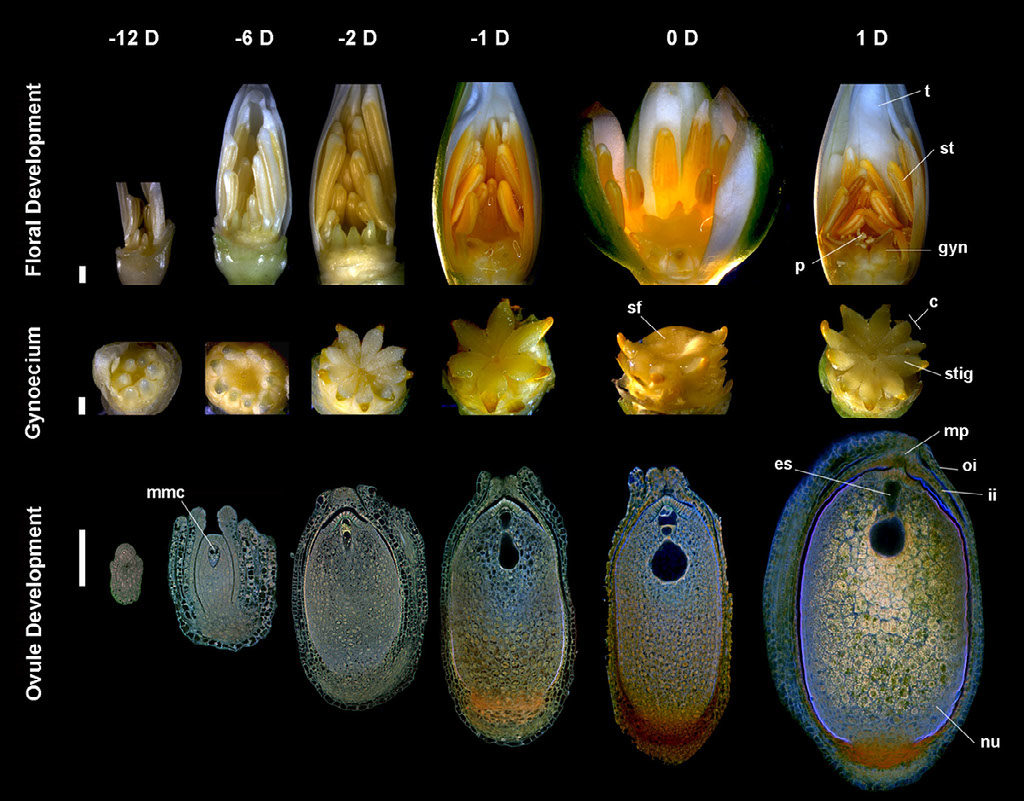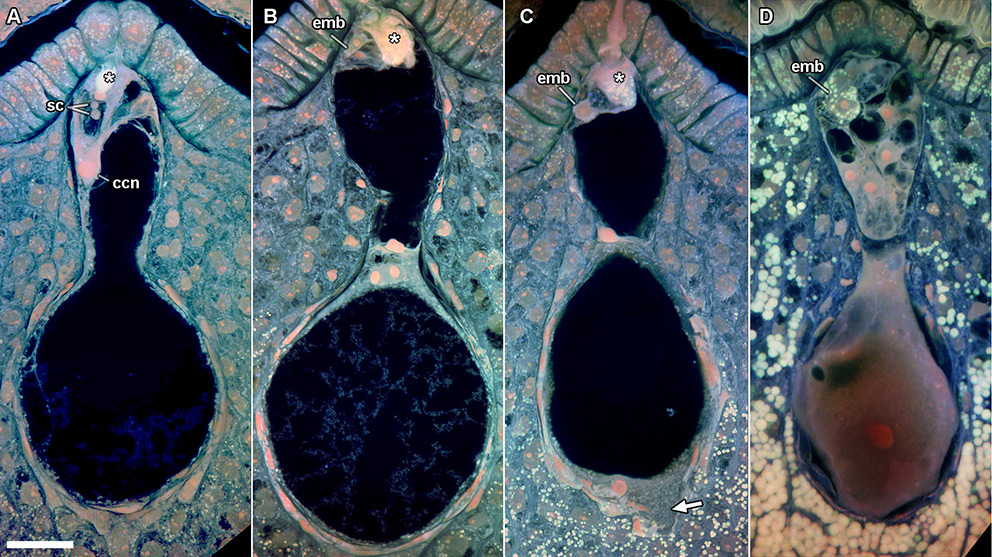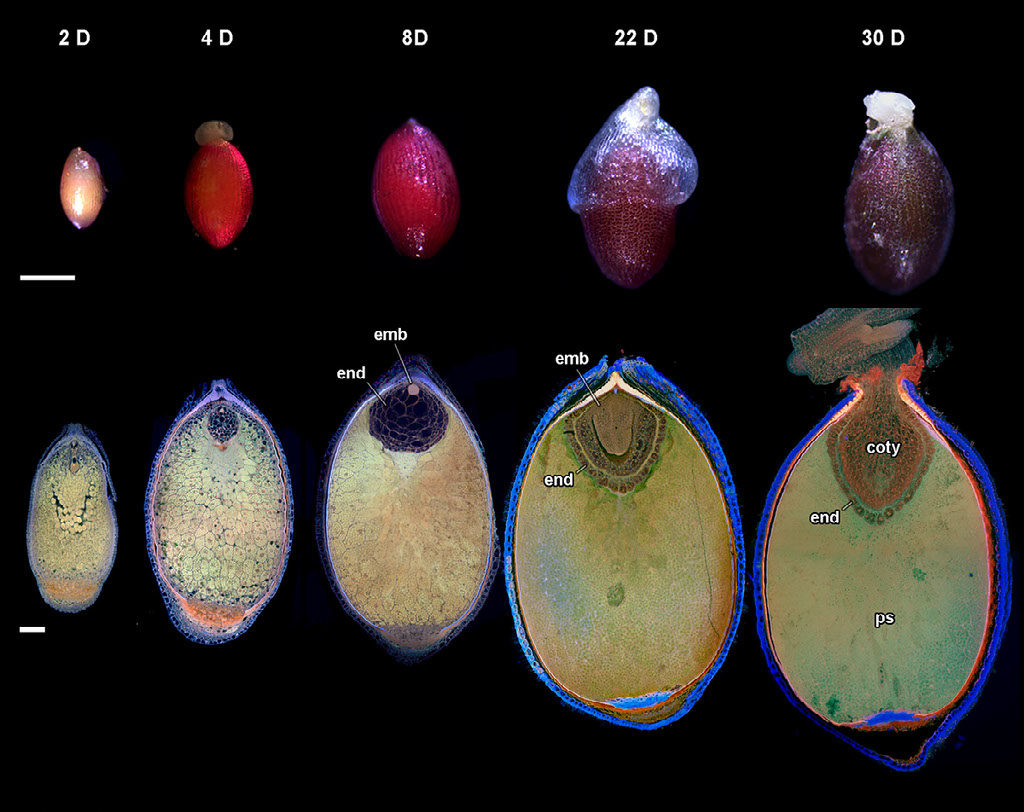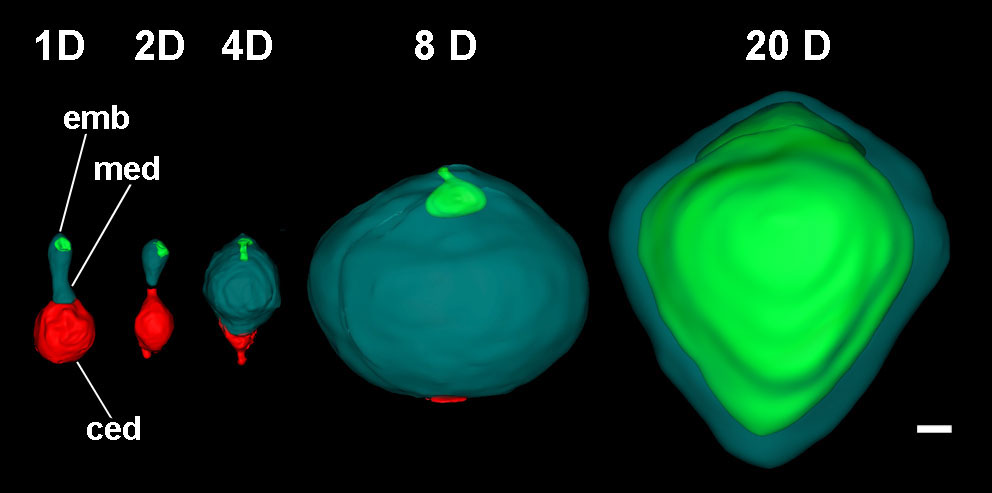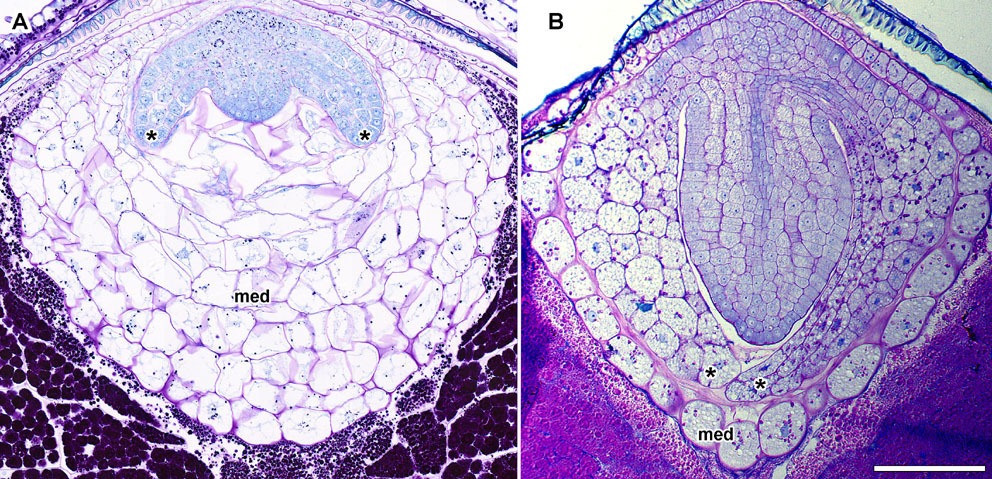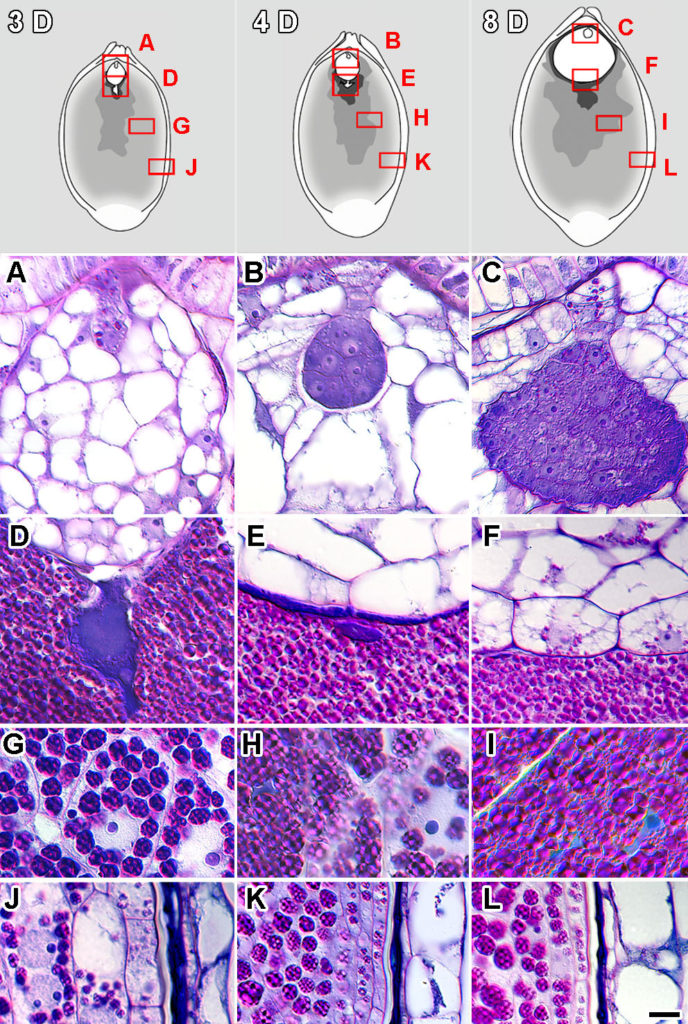What is Darwin’s “abominable mystery?”
A problem that Charles Darwin called an “abominable mystery” was to determine how flowering plants became dominant so rapidly in ecosystems across the world. Darwin wrote to Joseph Hooker in 1879 that “the rapid development as far as we can judge of all the higher plants within recent geological times is an abominable mystery.” After all, plants existed for a couple of million years without any blossoms. Flowering plants seem to have arrived out of nowhere and for Darwin, this was a threat to his theory of evolution. Today, biologists have some evidence that pollinators may be an important part of the answer to the mystery.
The following images are from “Floral biology and ovule and seed ontogeny of Nymphaea thermarum, a water lily at the brink of extinction with potential as a model system for basal angiosperms.” Rebecca A. Povilus Juan M. Losada William E. Friedman. Annals of Botany, Volume 115, Issue 2, 1 February 2015, Pages 211–226.)
